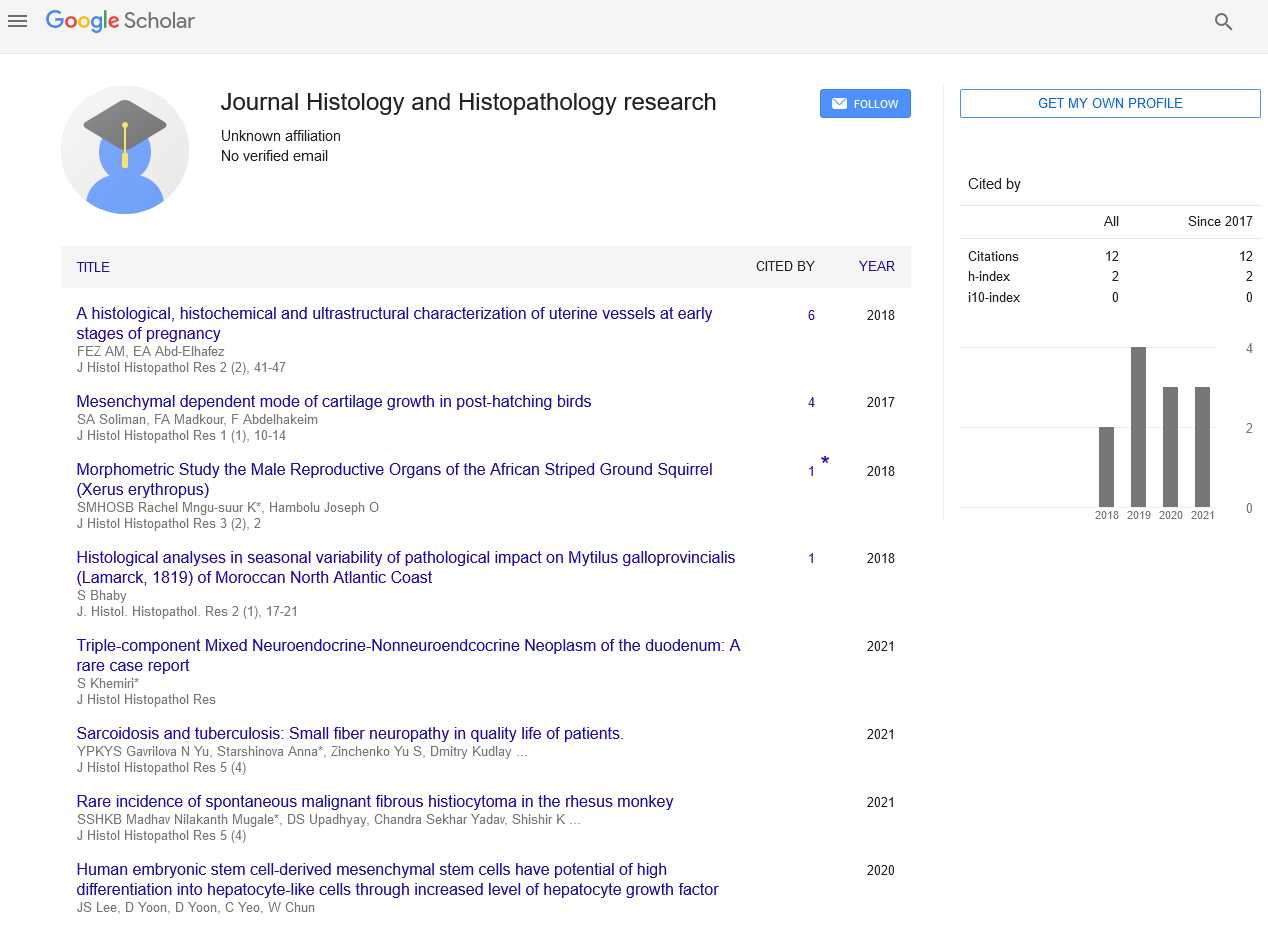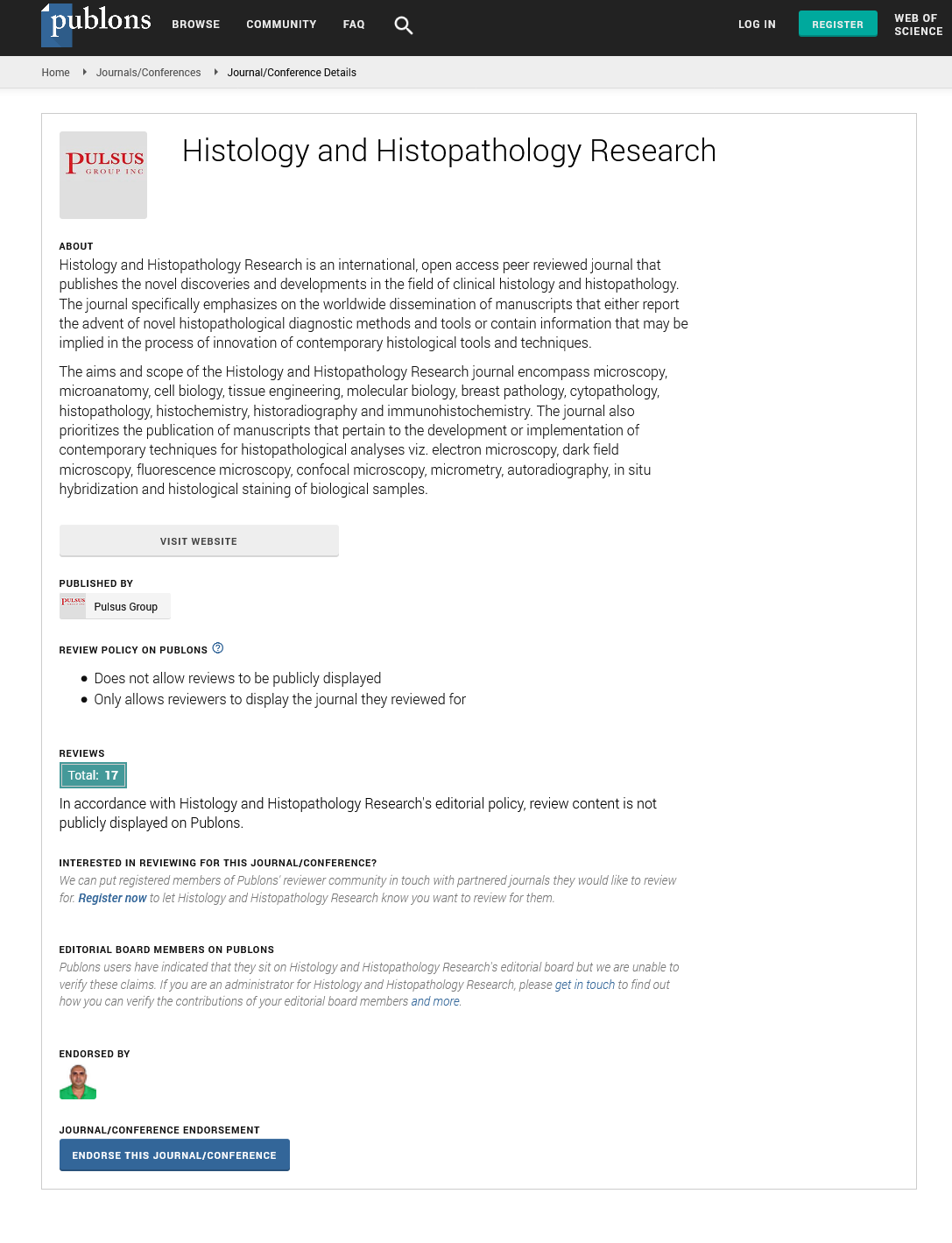Quercetin's protective effects on liver damage in high-fat diet-induced obesity
Received: 11-May-2022, Manuscript No. PULHHR-22-5094; Editor assigned: 13-May-2022, Pre QC No. PULHHR-22-5094 (PQ); Accepted Date: May 25, 2022; Reviewed: 22-May-2022 QC No. PULHHR-22-5094 (Q); Revised: 24-May-2022, Manuscript No. PULHHR-22-5094 (R); Published: 31-May-2022, DOI: 10.37532/pulhhr.22.6(3).76-77
Citation: Hills A. Quercetin's protective effects on liver damage in high-fat diet-induced obesity. J Histol Histopathol Res. 2022;6(3):76-77.
This open-access article is distributed under the terms of the Creative Commons Attribution Non-Commercial License (CC BY-NC) (http://creativecommons.org/licenses/by-nc/4.0/), which permits reuse, distribution and reproduction of the article, provided that the original work is properly cited and the reuse is restricted to noncommercial purposes. For commercial reuse, contact reprints@pulsus.com
Abstract
Obesity is a worldwide health issue that causes a variety of serious ailments. The current study sought to look into the effect of quercetin on apoptosis via inflammatory activity in high-fat diet-induced liver damage. Obesity is defined as an abnormal buildup of fat that has a negative impact on one's health. Obesity can be caused by a number of variables, including body metabolism, nutrition, physical activity, family propensity, hypothalamic dysfunction, environmental influences, and genetic factors. In 2008, almost 500 million people worldwide were fat, and 1.5 billion were overweight.
Keywords
High-fat diet; Quercetin; NAFLD
Opinion
Obesity is a worldwide health issue that causes a variety of serious ailments. The current study sought to look into the effect of quercetin on apoptosis via inflammatory activity in high-fat diet-induced liver damage.
Obesity is defined as an abnormal buildup of fat that has a negative impact on one's health. Obesity can be caused by a number of variables, including body metabolism, nutrition, physical activity, family propensity, hypothalamic dysfunction, environmental influences, and genetic factors. In 2008, almost 500 million people worldwide were fat, and 1.5 billion were overweight. It is predicted that by 2030, roughly 1.12 billion people would be fat and 2.16 billion will be overweight. As a result, obesity is recognized as one of the most serious and difficult health issues. Furthermore, it is thought to be a risk factor for the development of a variety of illnesses such as hypertension, coronary heart disease, respiratory problems, cancer, osteoarthritis, type 2 diabetes, nonalcoholic fatty liver disease, and metabolic syndrome.
Overweight and obesity are also linked to chronic inflammation, macrophage buildup, and elevated inflammatory markers and cytokines. ROS is becoming recognized as one of the causes of nonalcoholic steatohepatitis. Excess reactive oxygen production can induce cellular malfunction and irreparable damage in organs like the liver, which is a crucial organ that plays a key part in the detoxification process. When intracellular antioxidants are unable to neutralise ROS, a biochemical process known as oxidative stress ensues. If liver damage has occurred, blood levels of liver enzymes such as Lactate Dehydrogenase (LDH), Alanine Aminotransferase (ALT), and Aspartate Aminotransferase (AST) can be measured. Many pathological illnesses, including cancer, atherosclerosis, hypertension, neurological disorders, diabetes, ischemia/perfusion, asthma, acute respiratory distress syndrome, and chronic obstructive pulmonary disease, are exacerbated by oxidative stress.
To eliminate reactive oxygen species, the body employs natural antioxidants such as vitamin E, vitamin C (ascorbate),glutathione, and other enzymes. Although endogenous antioxidant enzymes are the first line of defence against oxidative stress, antioxidants can be received through food for ROS protection. Flavonoids and other phenolics, which are associated with bodily defence, have the antioxidant ability and may protect cells and tissues from oxidative damage.
Flavonoids are plant-derived polyphenolic chemicals with anti-allergic, anti-bacterial, anti-viral, anti-inflammatory, and anti-tumour properties. The flavonoid subclass of flavonols present in human diets is mostly found in fruits and vegetables, tea, red wine, coffee, beer, and various medicinal herbs. Many organs, including the liver, kidney, and pancreas, can be protected against oxidative stress by quercetin. According to recent research, quercetin contains anti-inflammatory and antioxidant capabilities, as well as free radical scavenging and metal chelating characteristics. Several epidemiological studies have also found that quercetin's antioxidant effect may lessen the chance of acquiring cancer, atherosclerosis, cardiovascular disease, chronic biliary obstruction, renal damage, and liver fibrosis.
A total of 18 adult female Sprague-Dawley rats were chosen and randomly assigned to one of three groups: control, obesity, and obesity-quercetin. Obesity and overweight For 120 days, quercetin groups were given a fairly high-fat diet. After obesity developed, quercetin was dissolved in maize oil and administered to the obesity-quercetin group by oral stomach route for 15 days. At the end of the trial, all animals were euthanized under anaesthesia, venous blood samples were obtained from the right ventricle, and liver markers were examined using commercially available diagnostic kits. In addition, histopathologic and immunohistochemical methods were used to examine liver sections. We also used immunohistochemistry to look at the expression of Bax and Bcl-2.
Obesity resulted in significant changes (p<0.05) in the majority of biochemical measures, hepatic markers, and Bax immunoreactivity. However, the level of Bcl-2 was marginally enhanced, but the level of Bax fell significantly (p<0.05) in the obesity-quercetin group. Obesity is no longer seen solely as a cosmetic issue. Obesity is a serious problem that increases the risk of developing a variety of health problems such as liver and gall bladder disease, hypertension, coronary artery disease, stroke, sleep apnea, certain cancers, cardiovascular disease, type 2 diabetes mellitus, osteoarthritis, and gynaecological problems, according to several studies. It has been demonstrated that feeding rats a High Fat Diet (HFD) is a favourable model of the acknowledged effects of HFD in people. Rats who are fed high-fat diets acquire weight quickly. As a result, the rat model is appropriate for developing obesity. The purpose of this research is to look into the effects of quercetin on apoptosis and inflammatory activity in obesity caused by a high-fat diet.
It has been shown that long-term obesity causes oxidative stress, which can contribute to inflammation. Proteins, nucleic acids, and lipids undergo structural and functional alterations as a result of oxidation, resulting in cellular damage and cell death. Some data show that oxidative stress damages the liver by producing toxic matter, proinflammatory cytokines, and mitochondrial malfunction in hepatocytes. It was claimed that oxidative stress causes portal and pericellular fibrosis, lobular inflammation, and hepatocellular enlargement in the liver. In addition, lymphocyte infiltrations and vacuolated cells have been seen in inflammatory processes. In the current study, we looked at histological abnormalities in the obese group's liver, such as inflammatory cell infiltration in the portal triad, sinusoidal dilatation, and hepatic cell degeneration. However, this study also found that obesity treated with quercetin had fewer histopathologic alterations. These findings revealed that quercetin might protect the rat liver from obesity-induced histopathologic alterations. Quercetin's potential therapeutic benefits on liver tissue may be connected with both direct and indirect antioxidant actions.
Finally, quercetin, a powerful antioxidant, has the potential to be employed as a medicinal agent in the prevention of obesity-related liver damage. More research is needed to determine the possible therapeutic benefits of quercetin in the treatment of obesity.






